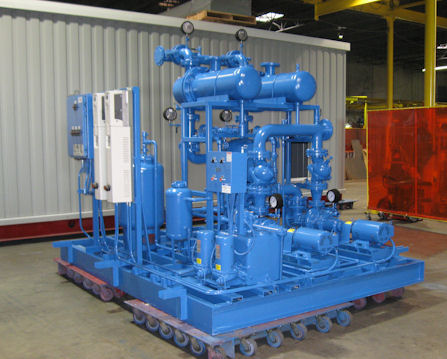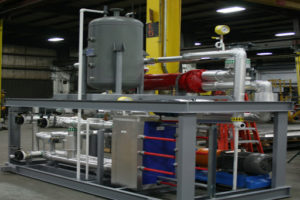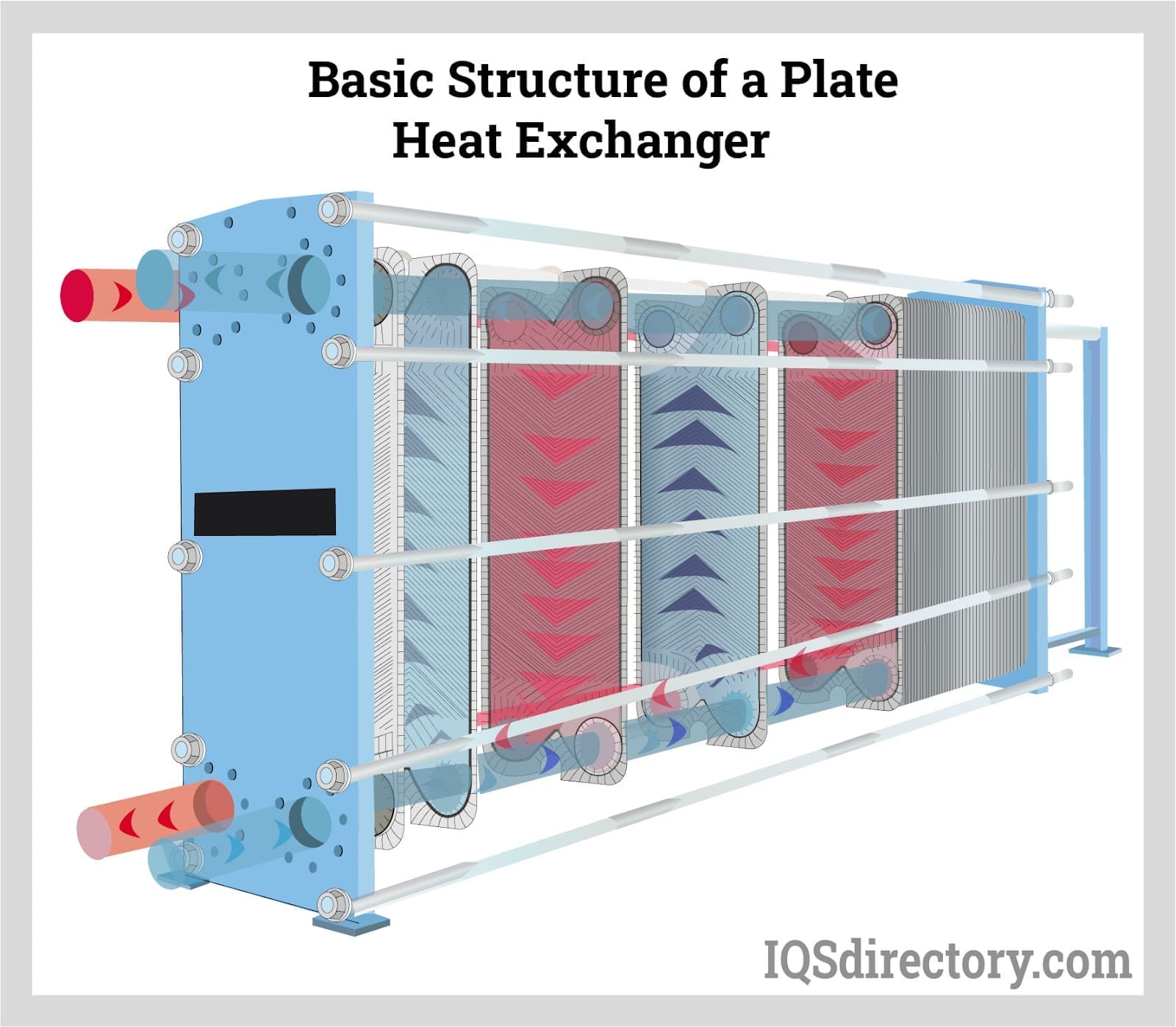5 Ways DVS Heat Transfer Systems Improve Energy Management in Electronics
Wiki Article
A Comprehensive Overview to Selecting the Right Heat Transfer Equipments for Your Requirements
Choosing the proper Heat transfer system is necessary for operational effectiveness. Various systems cater to various demands, influenced by elements such as temperature level range and liquid type. Understanding the concepts behind Heat transfer, such as convection, transmission, and radiation, is vital. In addition, examining energy resources and maintenance techniques can affect long-term performance. A closer exam of these factors to consider reveals exactly how to tailor a system to particular demands. What should one prioritize in this complicated decision-making process?Recognizing Heat Transfer: Secret Ideas and Concepts
Heat transfer may seem like an uncomplicated concept, it incorporates an array of principles that are essential for efficient system design - DVS Heat Transfer Systems. Understanding these principles is vital for designers and engineers who aim to maximize thermal performance in different applications. Conduction, for circumstances, includes the transfer of Heat with strong products, while convection refers to the movement of Heat within liquids. Radiation, an additional vital concept, describes how Heat can be moved via electro-magnetic waves. Each of these mechanisms plays a vital function in figuring out exactly how power relocates within a system. By completely realizing these ideas, specialists can make enlightened decisions, guaranteeing that Heat transfer systems operate effectively and fulfill the specific demands of their applications
Kinds Of Heat Transfer Systems: An Overview
Understanding the concepts of Heat transfer lays the groundwork for discovering the numerous kinds of Heat transfer systems available. Heat transfer systems can be classified mainly right into three kinds: convection, radiation, and conduction. Transmission involves Heat transfer via solid materials, relying on direct get in touch with between particles. Convection, on the various other hand, occurs in liquids (fluids and gases) where the movement of the fluid itself promotes Heat transfer. Radiation involves the transfer of Heat through electro-magnetic waves and does not need a tool, permitting it to happen in a vacuum. Each sort of system has distinctive features and applications, making it crucial for people and companies to meticulously analyze their certain needs when picking the most appropriate Heat transfer remedy.Applications of Heat Transfer Solutions in Numerous Industries
Heat transfer systems play a vital duty across numerous sectors, impacting performance and product quality. In industrial production processes, they facilitate exact temperature level control, while in food and beverage processing, they guarantee safety and security and preservation. Furthermore, cooling and heating and climate control systems count heavily on efficient Heat transfer to keep comfortable settings.Industrial Production Processes

Various commercial production processes depend heavily on effective Heat transfer systems to make best use of efficiency and enhance item top quality. In fields such as metalworking, Heat exchangers play a necessary function in keeping optimal temperature levels throughout welding, spreading, and forging. These systems ensure consistent Heat distribution, which is vital for achieving preferred material buildings. In the chemical production industry, Heat transfer systems help with accurate temperature control during reactions, influencing return and safety and security. In textile manufacturing, effective Heat monitoring is essential for dyeing and ending up procedures, influencing shade consistency and fabric quality. By picking appropriate Heat transfer innovations, manufacturers can enhance energy efficiency and minimize functional expenses, ultimately bring about a much more affordable and lasting production atmosphere.
Food and Beverage Processing
Efficient Heat transfer systems are equally crucial in the food and beverage handling industry, where keeping suitable temperatures is crucial for food safety and security and high quality. These systems play an important role in procedures such as pasteurization, sterilization, and food preparation, guaranteeing that items are secure for consumption and keep their dietary worth. Heat exchangers, for instance, successfully transfer Heat between liquids, maximizing power use while decreasing temperature changes. Furthermore, refrigeration systems are essential for protecting disposable things and extending shelf life. The option of Heat transfer technology straight impacts operational effectiveness and item integrity, making it vital for food and drink manufacturers to choose the ideal systems tailored to their certain handling demands. This mindful choice inevitably contributes to customer complete satisfaction and food security.
HVAC and Climate Control
While many sectors rely on Heat transfer systems for performance, A/C (Heating, Air Flow, and A/c) plays a necessary role in keeping interior environment control throughout various setups. These systems use Heat transfer concepts to manage temperature level, moisture, and air high quality, making sure convenience and safety in residential, business, and commercial environments. Appropriately made heating and cooling systems improve power effectiveness, decrease operational expenses, and minimize environmental effect. In commercial buildings, for circumstances, effective climate control adds to employee performance and client satisfaction. In commercial applications, cooling and heating systems aid preserve excellent conditions for equipment procedure and product conservation. Choosing the right Heat transfer system is vital for conference certain environment control demands and attaining total system efficiency.Evaluating Energy Sources for Heat Transfer Solutions
In assessing energy sources for Heat transfer systems, a contrast of renewable resource options and nonrenewable fuel source considerations is essential. Eco-friendly sources, such as solar and wind, offer lasting choices that can decrease environmental influence. Alternatively, fossil gas stay common as a result of their well-known framework and power thickness, motivating a careful evaluation of both alternatives.Renewable Energy Options

Fossil Gas Considerations
Evaluating fossil gas considerations is important for the effectiveness and Website sustainability of Heat transfer systems. Fossil gas, such as all-natural gas, oil, and coal, are conventional power sources that give substantial Heat output, making them prominent options for household and industrial applications. Their ecological impact, including greenhouse gas discharges and source exhaustion, raises worries. When picking a warm transfer system, it is vital to evaluate the schedule, cost, and regulative elements connected with these gas. Additionally, the effectiveness of nonrenewable fuel source systems need to be thought about, as greater effectiveness can minimize some environmental disadvantages. Inevitably, a balanced method considering efficiency and sustainability can lead decision-makers toward the most proper Heat transfer remedy for their details requirements.Aspects to Consider When Choosing a Warm Transfer System
Choosing an ideal Heat transfer system calls for careful factor to consider of different variables that can significantly influence effectiveness and performance. One vital variable is the operating temperature level array, which dictates the products and layout suitable for the application. Additionally, the kind of fluid used in the system-- whether gas or liquid-- impacts Heat transfer performance and compatibility. The system's dimension and ability have to straighten with the particular demands of the procedure to avoid inefficiencies. Energy resource schedule is likewise crucial, affecting operating prices and sustainability. In addition, the installation environment, consisting of room restrictions and availability for upkeep, plays a considerable function in system selection. Governing compliance and safety and security standards have to be thought about to ensure the system fulfills all legal requirements.Upkeep and Efficiency Optimization for Heat Transfer Equipments
Keeping Heat transfer systems is necessary for making certain maximum efficiency and durability. Routine upkeep activities, such as cleaning Heat exchangers and evaluating insulation, aid stop efficiency losses due to fouling and thermal bridging. Additionally, checking system parameters, including pressure and temperature, enables early discovery of anomalies, decreasing downtime and expensive repairs. Applying a preventive upkeep timetable can enhance performance and extend the lifespan of components. Updating to advanced control systems can boost functional performance by readjusting to varying conditions and lots. By focusing on maintenance and effectiveness optimization, drivers can achieve decreased power consumption, reduced operational costs, and enhanced general system dependability, ultimately causing far better source application and a much more sustainable procedure.Future Fads in Heat Transfer Technologies
As markets significantly prioritize sustainability and energy performance, future trends in Heat transfer innovations are set to undertake considerable changes. Advancements such as innovative materials, including carbon nanotubes and nanofluids, promise enhanced thermal conductivity and efficiency. Furthermore, the assimilation of renewable Continue resource resources into Heat transfer systems is getting energy, advertising green services. Smart innovations, including IoT sensors, are expected to change tracking and control, enabling real-time data evaluation for optimized performance. The development of modular and compact systems will promote much easier setup and maintenance, catering to diverse applications. These innovations indicate a shift in the direction of more lasting, reliable, and adaptable Heat transfer services, lining up with worldwide energy goals and environmental standards.
Frequently Asked Inquiries
What Are the Ecological Impacts of Heat Transfer Systems?
The environmental influences of Heat transfer systems can include greenhouse gas exhausts, energy usage, and potential thermal pollution. In addition, improper disposal of products and inefficiencies can add to resource exhaustion and community disruption.Just how Do I Determine the Cost-Effectiveness of a Warmth Transfer System?
To compute the cost-effectiveness of a heat transfer system, one should evaluate initial prices, functional expenditures, upkeep requirements, and power effectiveness, contrasting these factors versus the expected life expectancy and efficiency of the system.Can Heat Transfer Systems Be Made Use Of in Residential Setups?
Heat transfer systems can certainly be made use of in household setups. They provide reliable heating and cooling options, making homes extra comfy while possibly lowering power costs. Their adaptability permits various applications in property settings.What Safety Laws Apply to Heat Transfer Solutions?
Safety laws for Heat transfer systems commonly consist of guidelines on setup, why not try these out upkeep, and operation. Conformity with neighborhood building regulations, producer specs, and industry requirements is vital to assure secure and reliable system efficiency in different applications.How Do Various Materials Affect Heat Transfer Performance?

Transmission, for circumstances, includes the transfer of Heat via solid materials, while convection refers to the motion of Heat within liquids. Comprehending the concepts of Heat transfer lays the foundation for exploring the various kinds of Heat transfer systems readily available. Heat exchangers, for instance, efficiently transfer Heat in between liquids, enhancing power usage while lessening temperature variations. In reviewing power resources for Heat transfer systems, a contrast of renewable energy alternatives and fossil gas factors to consider is important. Metals, such as copper and aluminum, conduct Heat efficiently, whereas insulators like rubber and glass reduce down Heat flow.
Report this wiki page